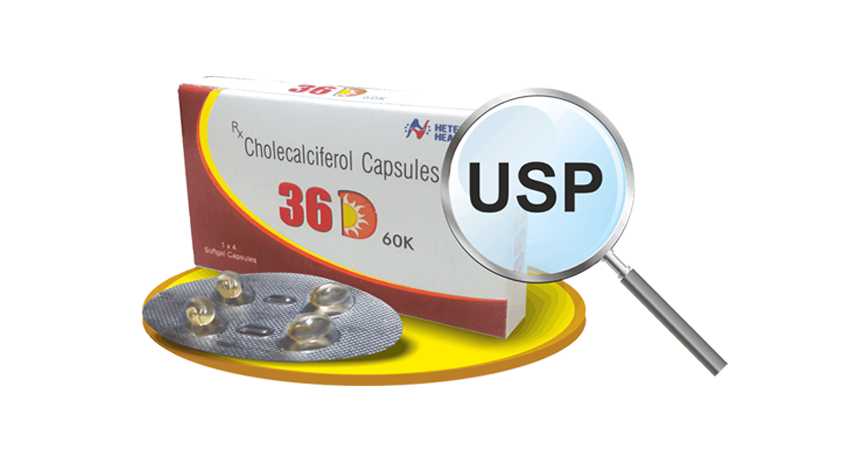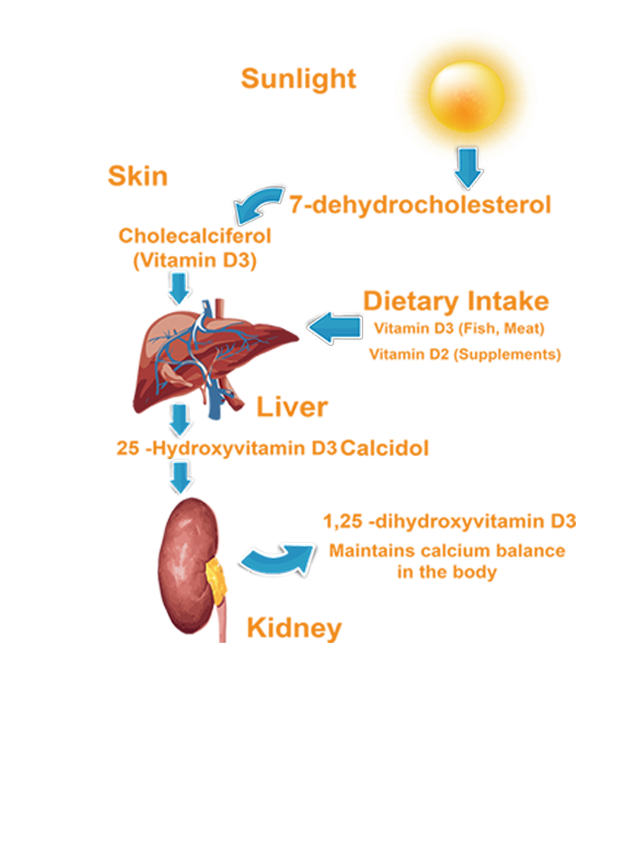36 D
36 D Capsule is a Vitamin D3 supplement.It contains Cholecalciferol as the active ingredient.

Introduction
Vitamin D is a fat-soluble vitamin and it is a steroid hormone that plays an important role in the regulation of calcium in the body and bone health. It does so by helping the body absorb calcium (one of bone’s main building blocks) from food and supplements. Vitamin D is important to the body in many other ways as well. Muscles need it to move, for example, nerves need it to carry messages between the brain and every body part, and the immune system needs vitamin D to fight off invading bacteria and viruses. Together with calcium, vitamin D also helps protect older adults from osteoporosis. Vitamin D is found in cells throughout the body. It is also produced in the body when ultraviolet rays from sunlight strike the skin and trigger vitamin D synthesis.
Sources of Vitamin D
Sun exposure
Vitamin D is made in the skin under the influence of sunlight. The amount of sunlight needed to synthesize adequate amounts of vitamin D varies, depending upon the person's age, skin color, sun exposure, and underlying medical problems. The production of vitamin D from the skin decreases with age. In addition, people who have darker skin need more sun exposure to produce adequate amounts of vitamin D, especially during the winter months.
Approximately 5–30 minutes of sun exposure between 10 AM and 3 PM at least twice a week to the face, arms, legs, or back without sunscreen usually lead to sufficient vitamin D synthesis. Individuals with limited sun exposure need to include good sources of vitamin D in their diet or take a supplement to achieve recommended levels of intake.
Food
Another important source of vitamin D is foods. It occurs naturally in fatty fish salmon, tuna, and mackerel. Smaller amounts of vitamin D are also present in beef liver, cheese, and egg yolks. Mushrooms provide some vitamin D.
Dietary Supplements
Vitamin D is found in supplements (and fortified foods) in two different forms: D2 (ergocalciferol) and D3 (cholecalciferol). Both increase vitamin D in the blood.
Normal Levels of Vitamin D in Blood The normal level of vitamin D in the blood is 30 ng/ml.
| # | Level of Circulating Vitamin D in Blood (ng/ml) | Vitamin D Status |
|---|---|---|
| 1 | ≤ 10 | Severe deficiency |
| 2 | 10-20 | Deficiency |
| 3 | 21-29 | Insufficiency |
| 4 | ≥ 30 | Sufficiency |
Vitamin D Deficiency
Vitamin D insufficiency affects almost 50% of the population worldwide. Vitamin D deficiency is highly prevalent in India and it affects 70%–100% of the general population (all the age group). A vitamin D deficiency can occur when usual intake is lower than recommended levels over time, exposure to sunlight is limited, the kidneys cannot convert inactive vitamin D into its active form, or absorption of vitamin D from the digestive tract is inadequate. Rickets in children and osteomalacia in adults are the classical vitamin D deficiency diseases which results in soft bones, bone pain and muscle weakness.


